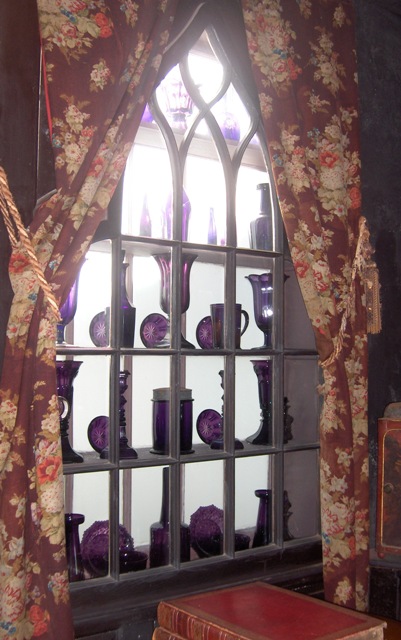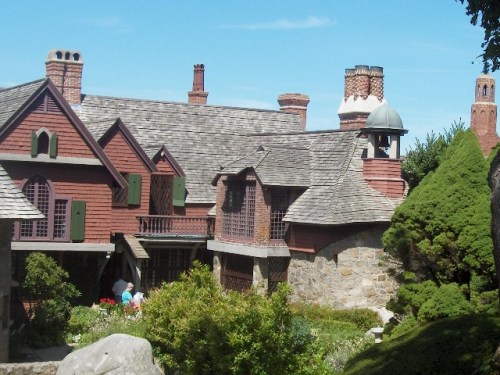 The house may have closed for the season on October 15, but you can still get your Beauport fix this winter.
The house may have closed for the season on October 15, but you can still get your Beauport fix this winter.
Sleeper was known for his distinctive collections of objects placed in specific arrangements throughout the house. This year, one of these arrangements will be disassembled and shipped to New York as part of the 2010 Winter Antiques Show. The ‘amethyst window’ arrangement, which is set within a passageway from the Octagon Room to the Golden Step Room, features different shapes and sizes of amethyst glass set within a Gothic window.
The Winter Antiques Show in New York is one of America’s most prestigious venues for fine and decorative arts. Founded in 1954 to benefit the East Side House Settlement, a social service organization supporting families and community development, the Winter Antiques Show has long set the standard for antiques shows nationwide. It sparked the creation of “Americana Week” in New York, where exhibits, auctions and events celebrate collecting. Attracting top American and international dealers and celebrity crowds, the 56th Winter Antiques Show will be held from January 22 to 31, 2010, at the National Historic Landmark Park Avenue Armory in New York City, with the celebrated opening night party on Thursday, January 21.
In celebration of Historic New England’s centennial, the 2010 exhibition will be Colonial to Modern: A Century of Collecting at Historic New England. In keeping with the antiques and works of art showcased at the show, where each object is authenticated by a committee of 160 experts and range in date from antiquity to 1969, Historic New England will present a survey exhibit showing some of the finest objects from our collection of nearly four hundred years of New England heritage. Our focus will be great objects with great stories – such as the Quincy family’s Boston-made Japanned high chest, a 1735-45 tour de force of furniture, which comes from one of New England’s most influential families and has survived two fires.
Historic New England has long been active at the Winter Antiques Show, working with dealers who support our collecting efforts, and hosting an annual reception for Appleton Circle members at a different private home or collection each year. For 2010, the organization’s involvement will be expanded with participation at the opening night party and through a series of lectures about our properties, collections and work, which will be offered for the public in the historic Veterans Room, designed by Louis Comfort Tiffany and fellow members of Associated Artists.
Major donors to Historic New England’s centennial initiatives or this exhibition will receive Winter Antiques Show tickets allowing the highest level of access to the show. For more information on special donor opportunities, opening night festivities, and other events, please contact the development office at development@HistoricNewEngland.org or at 617-227-3956.








